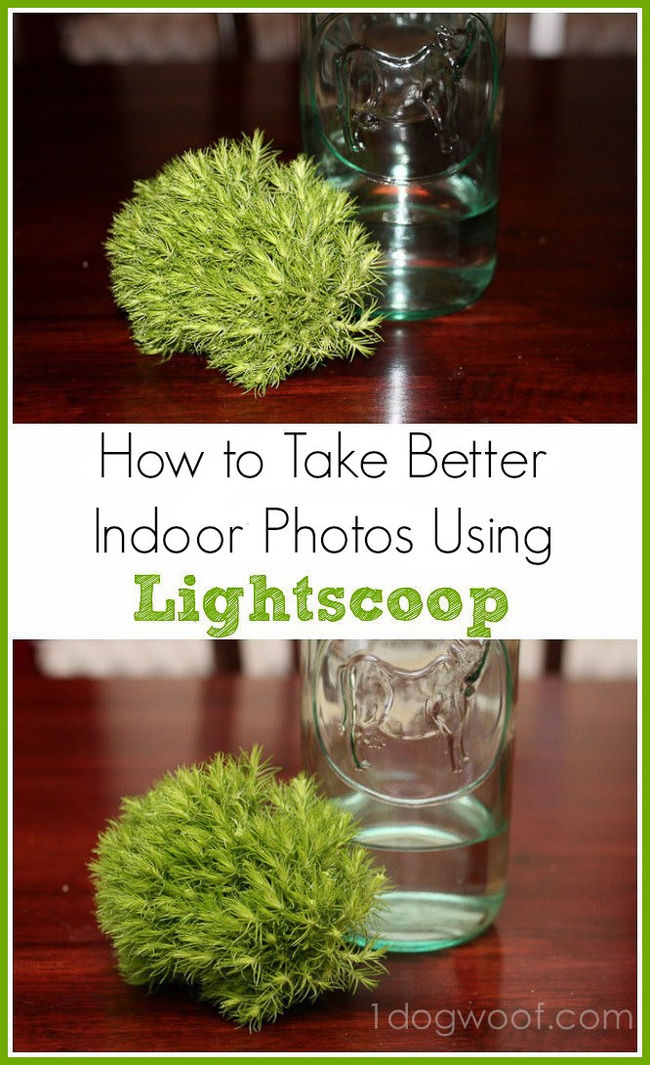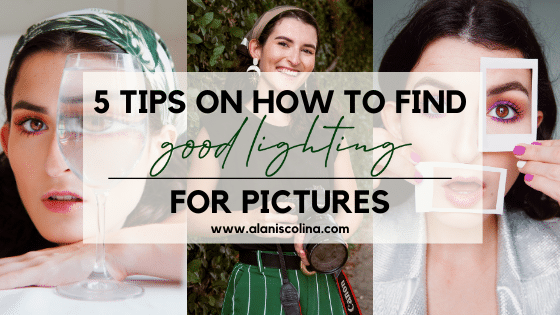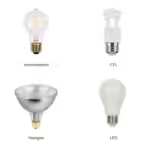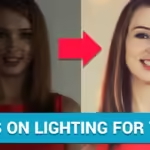How to Get Good Lighting for Photos, use natural light and avoid harsh midday sun. Position your subject near a window or in open shade.
Good lighting is crucial for capturing stunning photos. It can transform an ordinary image into an extraordinary one. Natural light is often the best source for photography, providing a soft and flattering effect. Early morning or late afternoon light, known as the golden hour, offers the most beautiful lighting conditions.
Avoid direct overhead sunlight as it creates harsh shadows and highlights. If shooting indoors, place your subject near a window with diffused light. For more control, use reflectors or softboxes to manipulate light. Proper lighting enhances your photos, making them more professional and visually appealing.
Natural Light Techniques
Natural light can transform your photos into stunning works of art. Using natural light correctly helps you achieve bright, vibrant images. Here are some effective techniques to get the best natural light for your photos.
Golden Hour
The Golden Hour is the hour after sunrise and before sunset. During this time, the light is soft and golden. This light creates beautiful, warm tones in your photos. Here are some tips for capturing the best golden hour photos:
- Plan your shoot around sunrise or sunset.
- Use apps to track the golden hour timing.
- Position your subject with the sun behind them for a glowing effect.
Diffused Light
Diffused light is soft, even light that reduces harsh shadows. This light is perfect for portraits and close-ups. You can achieve diffused light by:
- Shooting on cloudy days.
- Using white curtains to soften direct sunlight.
- Finding shaded areas to avoid direct sun.
| Light Type | Best Time | Tips |
|---|---|---|
| Golden Hour | After sunrise, before sunset | Plan shoots, use apps, sun behind subject |
| Diffused Light | Cloudy days, anytime | Use curtains, find shade |

Credit: www.youtube.com
Artificial Lighting Options
Natural light is great, but sometimes you need artificial lighting. Artificial lighting helps you take perfect photos indoors. Let’s explore some great options.
Led Lights
LED lights are energy-efficient and easy to use. They come in various sizes and shapes. You can use them to light up specific areas. LED lights are also adjustable. This means you can change the brightness to suit your needs.
Many photographers love LED lights because they don’t get hot. This makes them safe for long photo sessions. You can also find LED lights with different color temperatures. This helps you create the perfect mood for your photos.
Softboxes
Softboxes are popular for creating soft, even light. They diffuse the light, making shadows less harsh. This is great for portrait photography.
Softboxes come in different sizes. Smaller ones are good for tight spaces. Larger softboxes cover more area. They are easy to set up and use. You can attach them to any light source.
Many softboxes also have adjustable settings. This allows you to control the light’s intensity. Some models even have grids. Grids help focus the light where you need it most.
Check out this table for a quick comparison:
| Lighting Option | Benefits | Best Use |
|---|---|---|
| LED Lights | Energy-efficient, adjustable brightness, cool to touch | General lighting, color temperature control |
| Softboxes | Soft, even light, reduces harsh shadows | Portraits, close-ups |
Using Reflectors
Good lighting can make or break a photo. Reflectors are essential tools for photographers. They help bounce light onto your subject. This creates a more balanced and appealing image. Reflectors are easy to use and affordable.
Types Of Reflectors
Reflectors come in various types. Each type serves a different purpose. Knowing these types helps you choose the right one for your needs.
- White Reflectors: These provide soft, natural light. They are ideal for filling in shadows.
- Silver Reflectors: These offer a bright, crisp light. Use them for dramatic effects.
- Gold Reflectors: These give a warm, golden glow. Perfect for evening shots or warm skin tones.
- Black Reflectors: These absorb light. They help to create deeper shadows.
- Translucent Reflectors: These diffuse light. They soften harsh sunlight.
Positioning Tips
Positioning your reflector correctly is crucial. Here are some tips for optimal placement:
- Close to the Subject: Place the reflector near your subject. This ensures maximum light bounce.
- Angle Adjustments: Adjust the angle to direct the light where needed. Experiment with different angles for best results.
- Using a Stand: Use a stand to hold the reflector. This allows you to adjust the light hands-free.
- Natural Light Source: Use the reflector opposite a natural light source. This fills in shadows effectively.
- Indoor Lighting: Reflectors work well with artificial lights too. Position them to bounce light onto your subject.
Reflectors are versatile and enhance your photos. They help create professional-quality images with ease.
Understanding Shadows
Shadows play a crucial role in photography. They add depth and dimension to images. Understanding shadows can significantly improve your photos. There are mainly two types of shadows: soft shadows and hard shadows. Let’s dive into each type and see how they affect your photos.
Soft Shadows
Soft shadows are created by diffused light sources. These shadows have blurry edges and are less intense. They give a natural and pleasing look to the photos. Soft shadows are ideal for portraits and close-up shots. They create a gentle transition between light and dark areas.
You can create soft shadows using:
- Natural light on a cloudy day
- Light diffusers or softboxes
- Reflectors to bounce light
Soft shadows help in reducing harsh lines and wrinkles. They are perfect for capturing delicate details. Using soft shadows, you can achieve a smooth and flattering appearance.
Hard Shadows
Hard shadows are formed by direct light sources. These shadows have sharp edges and are more defined. Hard shadows can be dramatic and striking. They are often used in artistic and high-contrast photography.
Common sources of hard shadows include:
- Direct sunlight
- Unfiltered flash
- Spotlights
Hard shadows emphasize texture and shape. They are useful for creating strong visual impact. These shadows can highlight the structure and form of your subject.
Understanding the difference between soft and hard shadows can enhance your photography skills. Choose the right type of shadow to convey the desired mood in your photos.
Balancing Light Sources
Understanding how to balance light sources can make your photos look amazing. It involves using both natural and artificial light effectively. This balance ensures your pictures have the right amount of brightness and contrast.
Mixing Natural And Artificial Light
Natural light comes from the sun. Artificial light comes from lamps or flashes. Mixing these two can create stunning effects. Here are some tips:
- Use natural light from windows during the day.
- Add artificial light to fill in shadows.
- Use soft white bulbs to mimic natural light.
Combine both sources for a balanced look. Natural light is soft and warm. Artificial light can be controlled and directed. Together, they enhance your photos.
Color Temperature
Color temperature affects how warm or cool your photos appear. It’s measured in Kelvin (K). Here is a simple table to understand:
| Light Source | Color Temperature (K) |
|---|---|
| Candlelight | 1,000 – 2,000 |
| Sunrise/Sunset | 3,000 – 4,000 |
| Daylight | 5,000 – 6,500 |
| Cloudy Sky | 6,500 – 8,000 |
Mixing lights with different color temperatures can create unique effects. Use daylight bulbs (around 5,000K) for natural-looking photos. Use warm bulbs (around 3,000K) for a cozy feel.
Ensure your camera’s white balance setting matches your light source. This helps maintain accurate colors. Experiment with different settings to find what works best for your photos.

Credit: www.1dogwoof.com
Lighting For Portraits
Capturing the perfect portrait requires the right lighting. Proper lighting enhances facial features and creates mood. Two popular lighting styles are Rembrandt Lighting and Butterfly Lighting. Let’s explore both.
Rembrandt Lighting
Rembrandt Lighting is named after the famous painter Rembrandt. This technique creates a small triangle of light on one cheek.
To achieve this look, follow these steps:
- Place the light source at a 45-degree angle to the subject.
- Position the light above the subject’s eye level.
- Adjust until a triangle of light appears on the far cheek.
Rembrandt Lighting adds depth and dimension to portraits. It is ideal for creating dramatic, moody images.
Butterfly Lighting
Butterfly Lighting creates a butterfly-shaped shadow under the nose. It is also known as Paramount Lighting.
To create Butterfly Lighting, follow these steps:
- Place the light source directly in front of the subject.
- Position the light above the subject’s eye level.
- Ensure the light is centered and slightly above.
Butterfly Lighting highlights facial features and reduces shadows. It is perfect for glamour and beauty shots.
| Lighting Style | Position | Effect |
|---|---|---|
| Rembrandt Lighting | 45-degree angle, above eye level | Creates a triangle of light on the cheek |
| Butterfly Lighting | Directly in front, above eye level | Creates a butterfly shadow under the nose |
Both lighting styles offer unique effects. Experiment with each to find your favorite look.
Lighting For Product Photography
Lighting is key for product photography. Good lighting highlights details and reduces glare. This guide helps you achieve the best lighting for product photos.
Highlighting Details
Proper lighting highlights a product’s details. Use soft light to show texture and colors. Natural light is best, but you can use artificial light too.
Here are some tips:
- Use a lightbox for small items.
- Place lights at 45-degree angles to the product.
- Experiment with different light positions.
A lightbox diffuses light evenly. It helps in eliminating harsh shadows. This makes the product’s details more visible.
Reducing Glare
Glare can ruin product photos. It hides important details and makes images less appealing. Use diffused lighting to reduce glare.
Here are some methods:
- Use a diffuser or softbox.
- Adjust the angle of the light source.
- Use a polarizing filter on your camera.
Diffusers spread light evenly. Softboxes create soft light. These tools reduce glare significantly. Adjusting the light angle can also help. A polarizing filter minimizes reflections.
Here is a comparison table for quick reference:
| Method | Effect |
|---|---|
| Lightbox | Diffuses light evenly |
| Softbox | Creates soft light |
| Polarizing Filter | Minimizes reflections |
Use these methods for better product photos. Highlight details and reduce glare. Your product images will look more professional.

Credit: blog.be.live
Common Lighting Mistakes
Good lighting makes a huge difference in photos. But many make common mistakes. These mistakes can ruin your photos. Let’s look at the most common ones.
Overexposure
Overexposure happens when too much light hits the camera sensor. This makes your photo very bright. Details in bright areas get lost. They become pure white.
To avoid overexposure, check your camera settings. Lower the ISO. Use a faster shutter speed. Adjust the aperture to a higher f-stop.
Tip: Use a histogram on your camera. It shows if your photo is too bright. Keep the peaks in the middle.
Underexposure
Underexposure is the opposite of overexposure. Not enough light hits the camera sensor. Your photo turns out too dark. Details in the dark areas get lost.
To fix underexposure, increase the ISO. Use a slower shutter speed. Adjust the aperture to a lower f-stop.
Tip: Use a tripod with slower shutter speeds. This prevents blurry photos.
| Issue | Solution |
|---|---|
| Overexposure | Lower ISO, faster shutter speed, higher f-stop |
| Underexposure | Increase ISO, slower shutter speed, lower f-stop |
Frequently Asked Questions
How To Get Good Lighting When Taking Pictures?
Use natural light whenever possible. Shoot during the golden hour. Avoid harsh midday sun. Position light source behind the camera. Use reflectors to eliminate shadows.
How Do I Get Good Lighting For Product Photos?
Use natural light or softbox lighting. Avoid harsh shadows. Position the light at a 45-degree angle. Use a reflector. Adjust camera settings for brightness.
How Do You Fix Poor Lighting In Photos?
Adjust exposure and brightness settings. Use photo editing apps like Lightroom or Photoshop. Increase contrast and sharpness. Add artificial lighting sources. Avoid direct sunlight.
How To Get Even Lighting In Photos?
Use natural light whenever possible. Position your subject near a window. Avoid harsh shadows by using diffusers or reflectors. Adjust camera settings for balanced exposure. Use softbox lighting for indoor shoots.
Conclusion
Achieving great lighting for photos is crucial for capturing stunning images. Experiment with natural light, use reflectors, and adjust your camera settings. Practice and patience will help you master lighting techniques. By following these tips, you’ll elevate your photography skills and create visually appealing photos that stand out.



